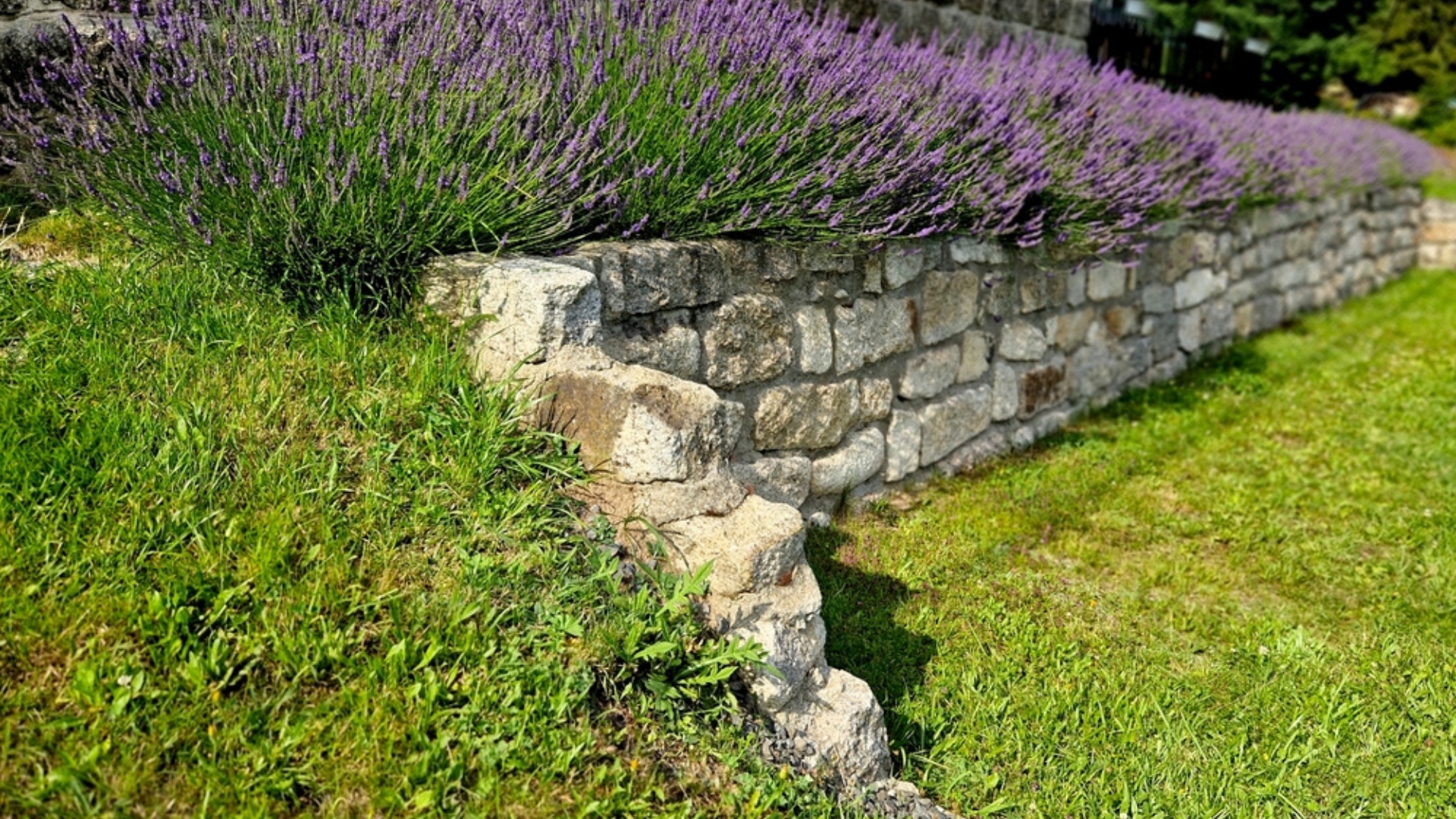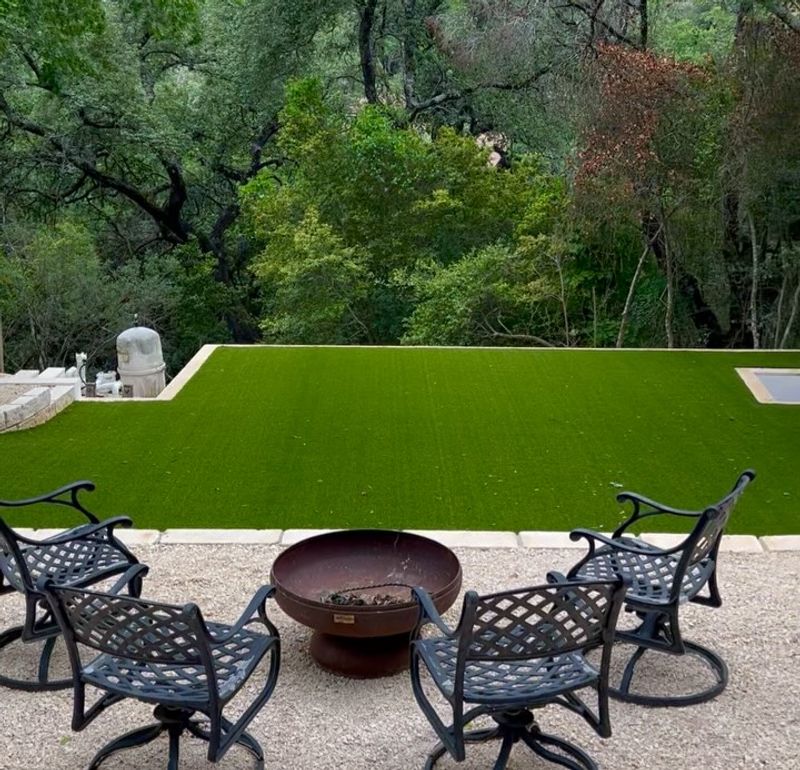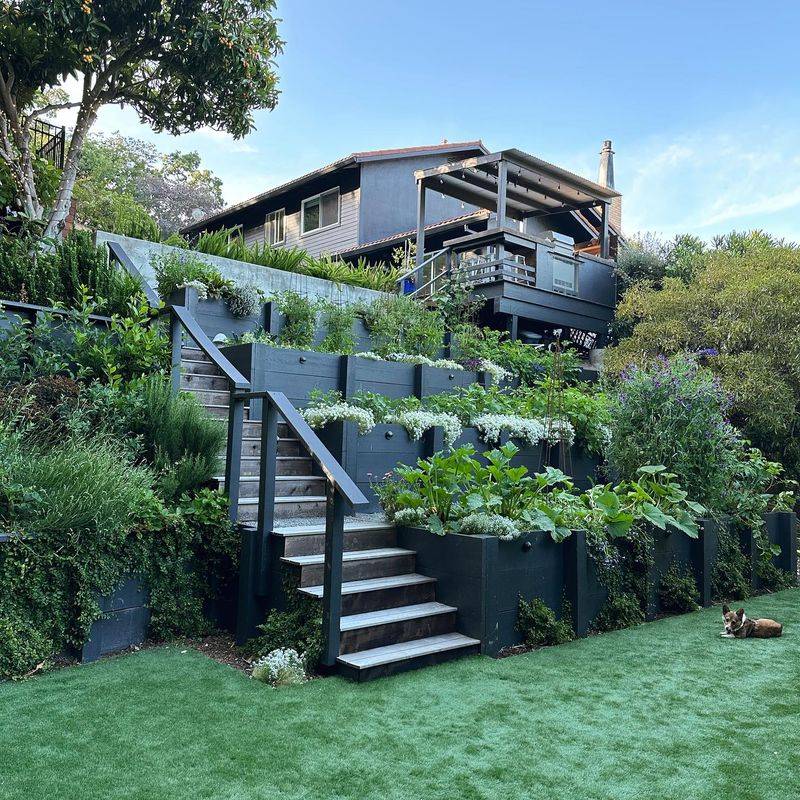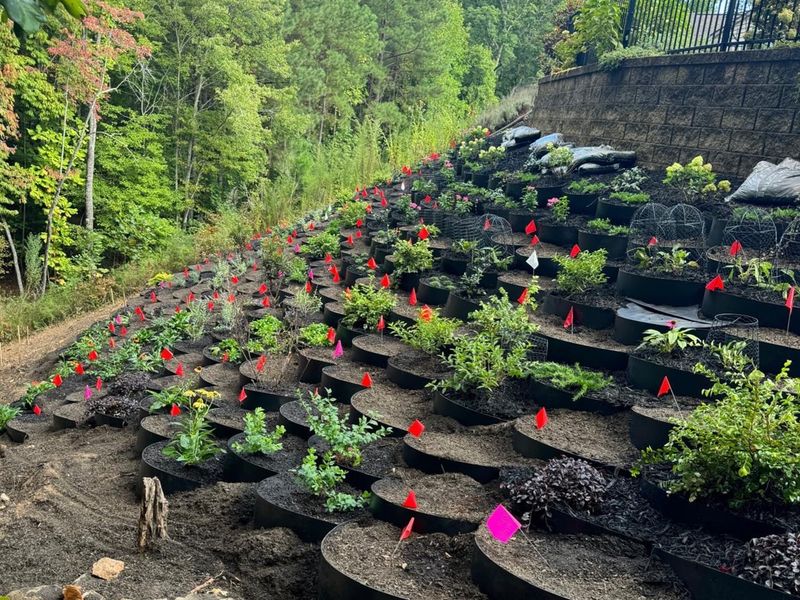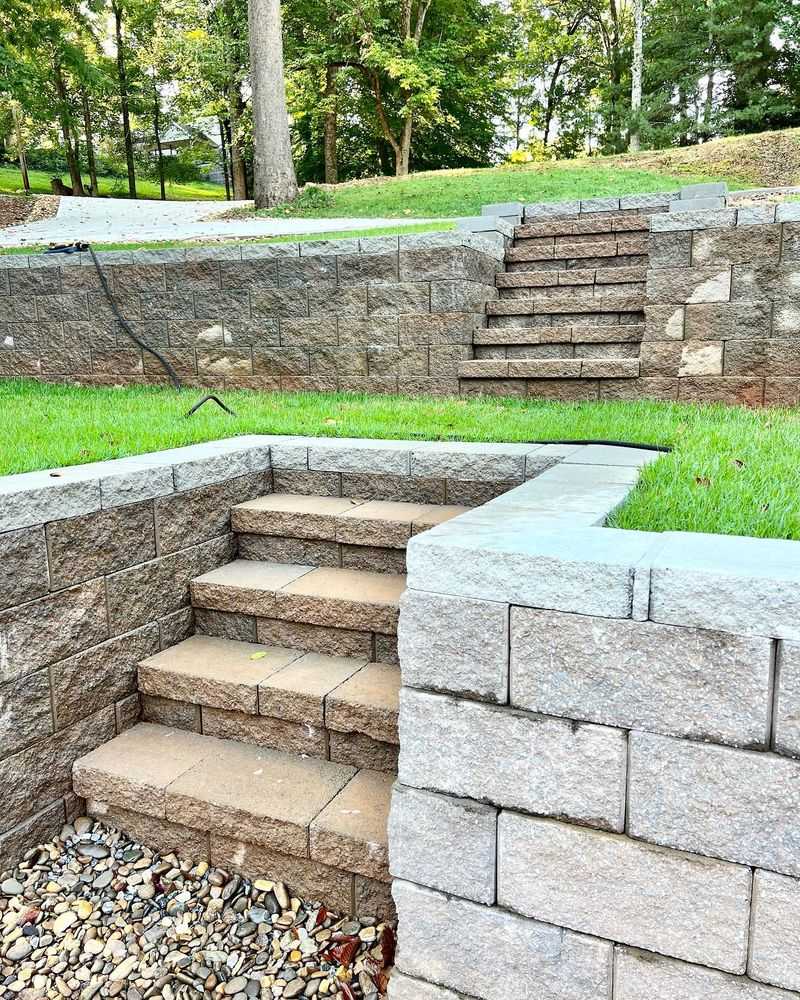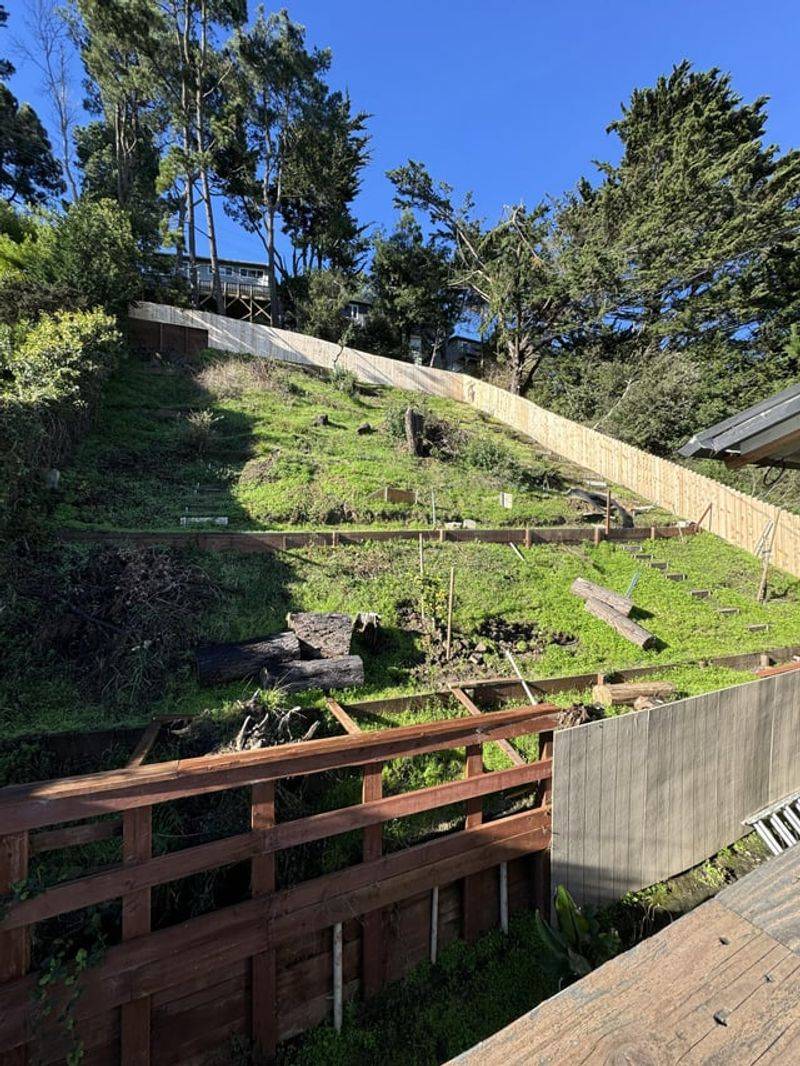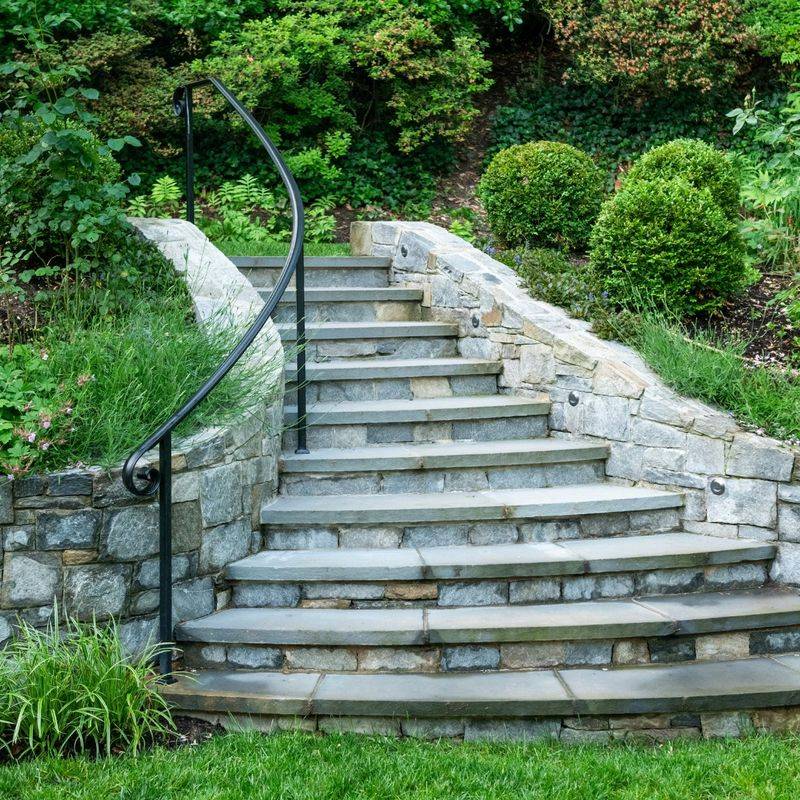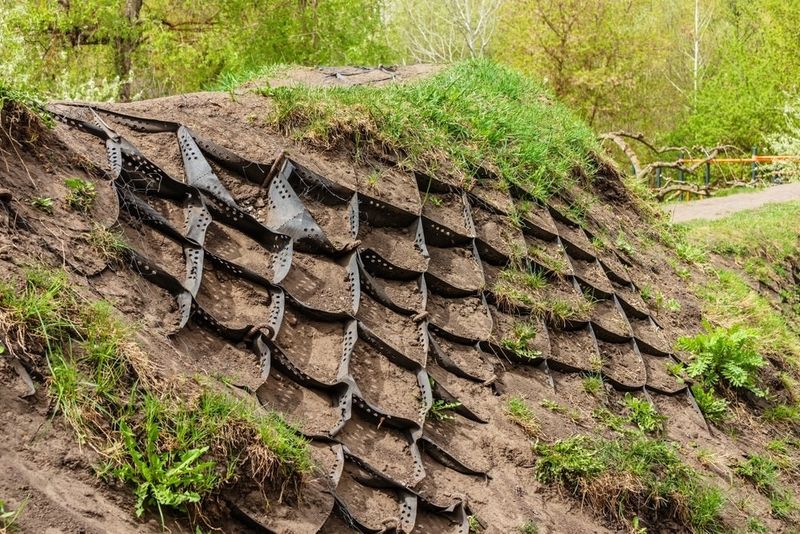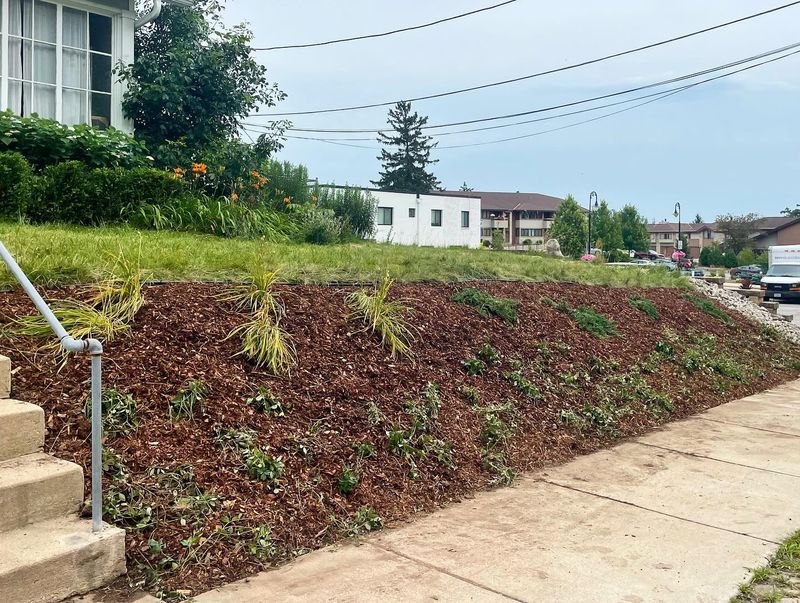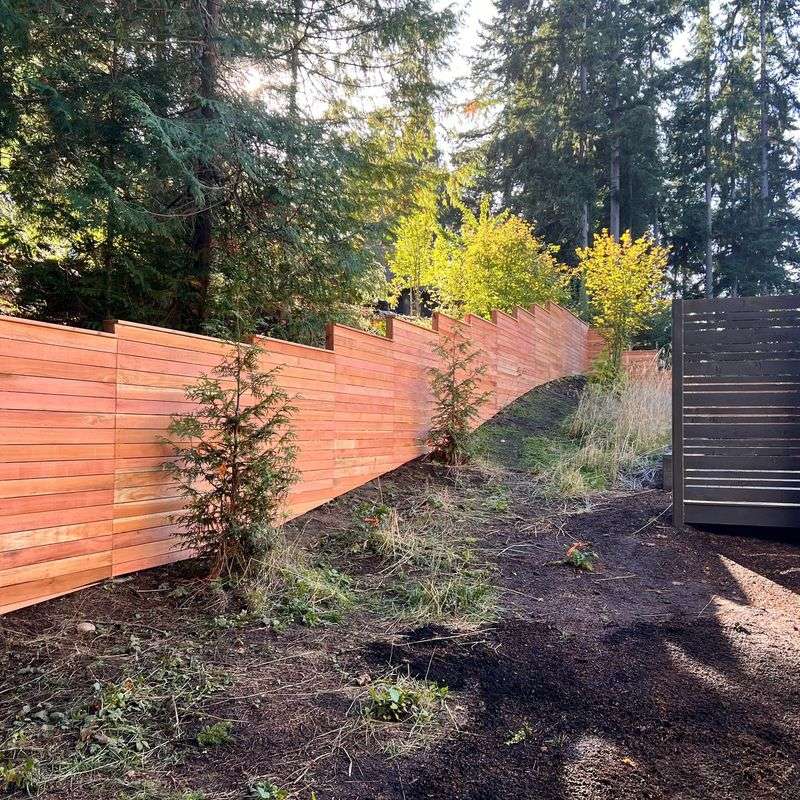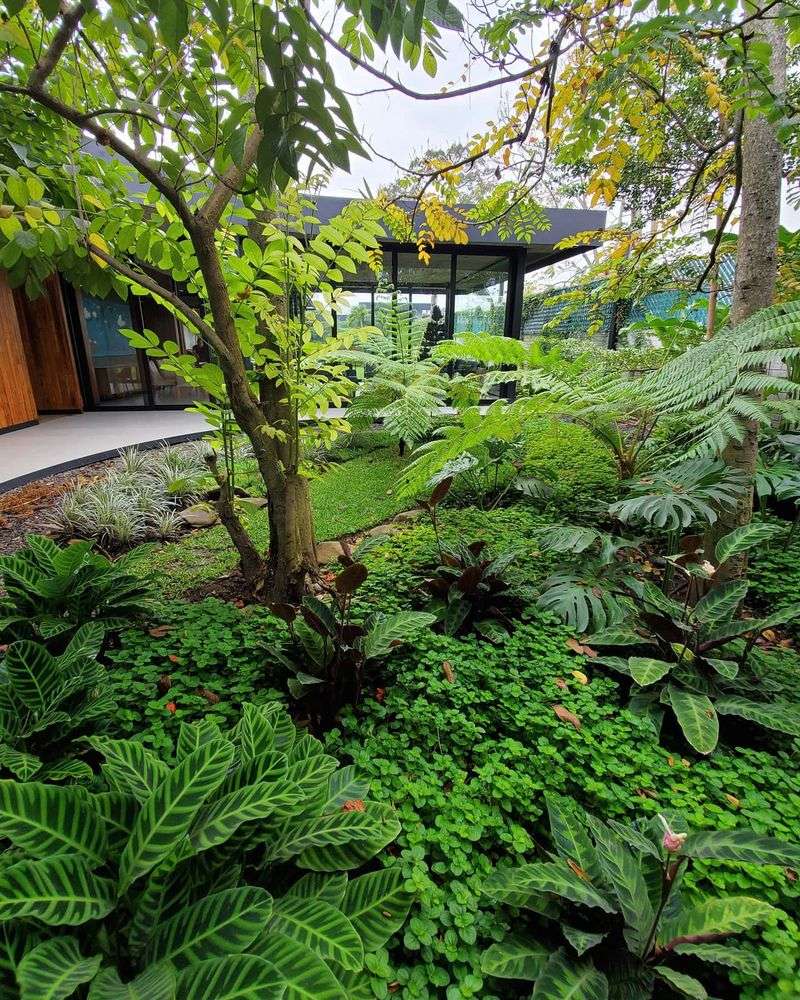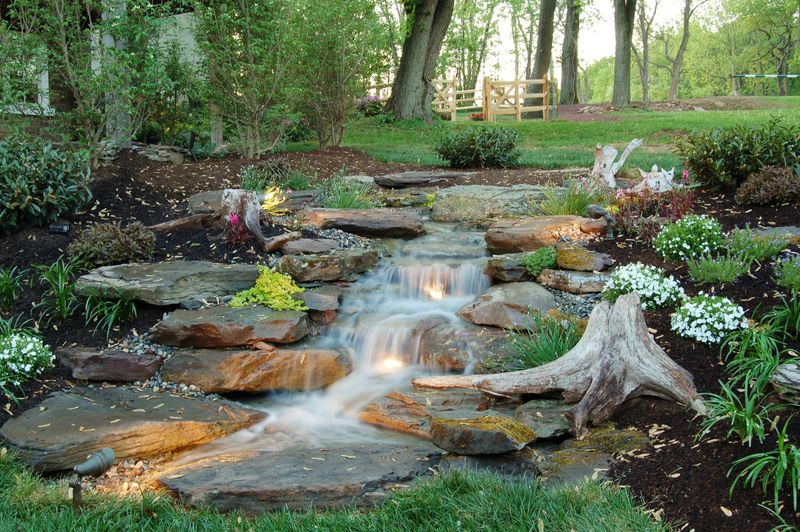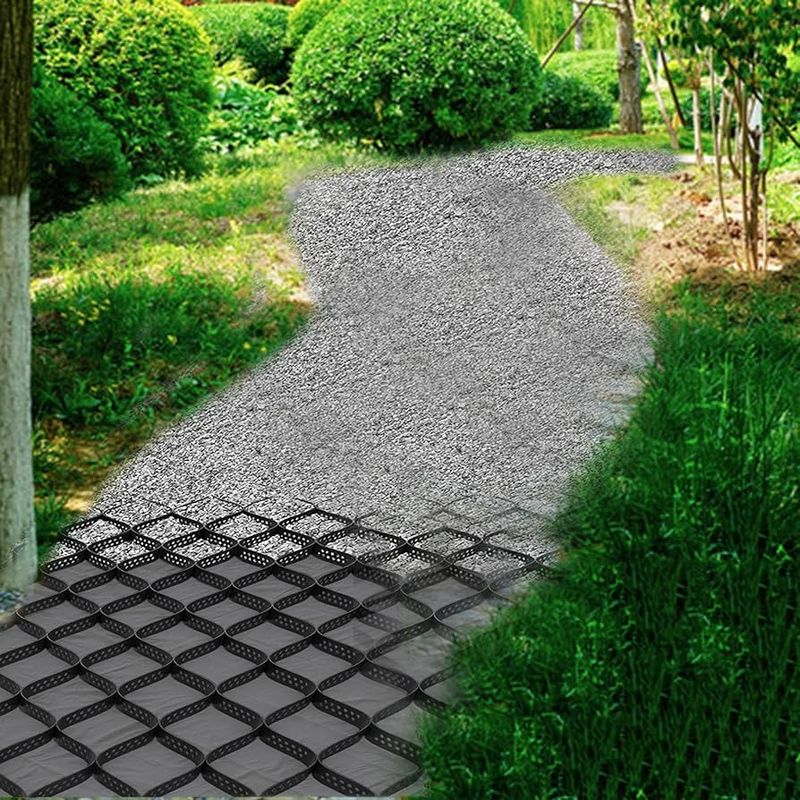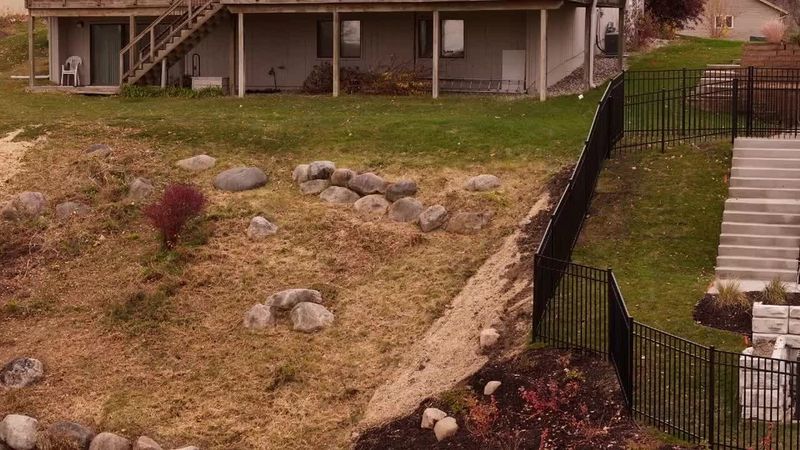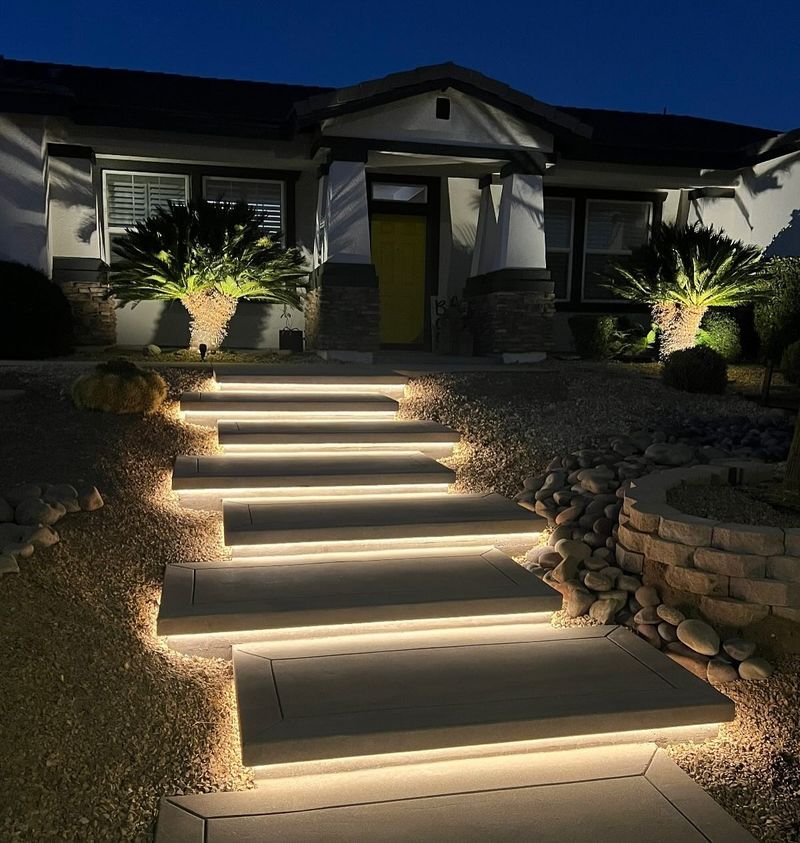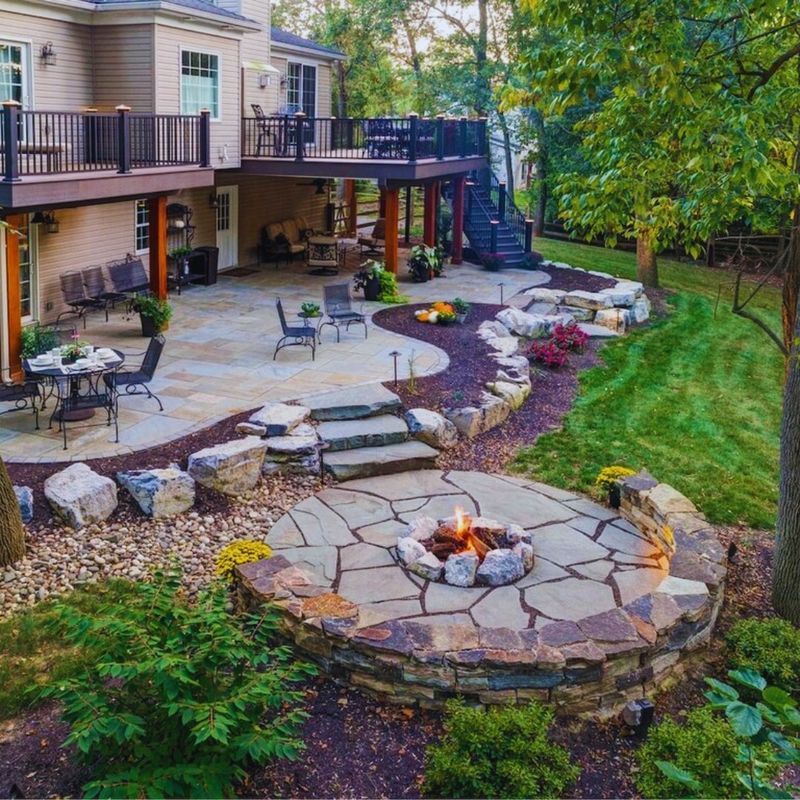Tackling a sloped backyard can feel like solving a puzzle with missing pieces. Many homeowners struggle to make the most of uneven terrain, leading to wasted space and missed opportunities. Smart planning can transform these challenging slopes into stunning, functional outdoor areas that add value to your property.
1. Ignoring Natural Water Flow
Rain doesn’t care about your landscaping plans! Failing to work with your yard’s natural drainage patterns creates erosion problems that damage plants and structures.
Instead, install a proper drainage system with French drains or swales that direct water away from your home. Use the slope’s natural flow to create beautiful rain gardens or water features that turn a problem into a focal point.
2. Building a Single Large Terrace
One massive terrace might seem efficient, but it creates an awkward, unusable space that fights against the natural landscape. The large flat area often sits empty while costing a fortune to build.
Create multiple smaller terraces instead, connected by attractive staircases or pathways. This multi-level approach feels more natural, creates distinct zones for different activities, and requires less extensive (and expensive) excavation work.
3. Planting the Wrong Vegetation
Those gorgeous plants might look perfect in the nursery, but shallow-rooted varieties can’t hold soil on slopes. When heavy rain comes, watch your beautiful landscaping wash away!
Choose deep-rooted plants specifically designed for hillsides. Native ground covers, ornamental grasses, and certain shrubs excel at soil retention while requiring minimal maintenance. The right plants create a beautiful, sustainable solution that improves with time.
4. Using Vertical Retaining Walls Exclusively
Massive vertical retaining walls create an institutional, fortress-like appearance while being surprisingly inefficient for space utilization. They’re expensive to build correctly and can fail catastrophically when done poorly.
Consider stepped or tiered retaining walls instead. These gentler transitions look more natural, create planting pockets, and distribute soil pressure more effectively.
Materials like natural stone or timber can soften the visual impact while maintaining structural integrity.
5. Failing to Create Functional Zones
Random placement of features without planning creates awkward, unused spaces throughout your sloped yard. The grill sits too far from the dining area, and play spaces are disconnected from seating areas.
Map out activity zones based on how you actually use your outdoor space. Place cooking areas close to dining spots.
Create conversation nooks with comfortable seating. A thoughtful layout transforms awkward slopes into purposeful outdoor rooms that flow naturally.
6. Neglecting Proper Stair Design
Steep, narrow steps made from slippery materials create dangerous pathways that discourage yard use. When moving between levels becomes a chore, beautiful areas remain unused.
Design wide, gently rising stairs with proper lighting and handrails where needed. Consider materials that provide traction when wet. Well-designed steps invite exploration and make daily yard maintenance easier and safer.
7. Over-Mulching Steep Areas
Piling mulch on steep slopes creates a slippery mess that washes away with the first heavy rain. Your investment literally goes down the drain while creating cleanup headaches.
Use heavier hardwood mulches in moderate layers, or better yet, install erosion control matting underneath. For very steep areas, consider alternatives like decorative river rock or ground covers that root and stabilize the soil naturally.
8. Creating Unusable Lawn Areas
Fighting nature to maintain grass on steep slopes wastes water and creates maintenance nightmares. Mowing becomes dangerous, and the lawn often looks patchy despite your best efforts.
Reserve flat areas for lawn and transform steeper sections into low-maintenance plantings or hardscaped features.
Rock gardens, native wildflower meadows, or terraced vegetable gardens offer beautiful alternatives that don’t require weekly mowing on dangerous inclines.
9. Improper Fence Placement
Installing fences without accounting for slope creates awkward angles and gaps that look unprofessional. Standard panels forced onto uneven ground leave exposed areas that compromise security and aesthetics.
Choose stepped installation methods where fence sections follow the terrain in level steps. Alternatively, consider custom-built fences that parallel the slope perfectly.
The right approach creates clean lines that enhance your landscape rather than fighting against it.
10. Overlooking Microclimates
Slopes create natural variations in sun exposure, wind patterns, and moisture levels. Ignoring these microclimates leads to struggling plants and missed opportunities.
Map sun patterns throughout the day and year. Use north-facing slopes for shade-loving plants, while south-facing areas become perfect for sun-worshipping varieties.
Taking advantage of these natural conditions reduces water usage and maintenance while creating a more resilient landscape.
11. Installing Impractical Water Features
Poorly designed water features on slopes can create maintenance headaches and safety hazards. Water often overflows during heavy rain, causing erosion and potentially damaging your home’s foundation.
Work with the natural slope to create cascading water features that look and function naturally.
Properly lined stream beds with strategically placed rocks create beautiful visual interest while controlling water flow. The slope becomes an asset rather than an obstacle.
12. Choosing the Wrong Paving Materials
Smooth, non-porous paving materials become dangerously slippery on slopes, especially when wet or frosty. They also accelerate water runoff, contributing to erosion problems downhill.
Select textured materials with good traction like exposed aggregate concrete, textured stone, or special non-slip pavers. Consider permeable options that allow water to infiltrate rather than run off.
The right materials enhance safety while complementing your overall landscape design.
13. Forgetting About Winter Conditions
Summer planning often overlooks how slopes behave when snow and ice arrive. Steep driveways become unusable, and pathways turn treacherous during winter months.
Design with winter in mind by incorporating gentler slopes where possible, especially for frequently used paths. Install heating systems under critical walkways if budget allows. Strategic placement of windbreaks and consideration of snow storage areas ensures your outdoor space remains functional year-round.
14. Poor Lighting Strategies
Inadequate lighting makes slopes hazardous after dark and wastes the evening potential of your outdoor space. Standard placement patterns don’t work well on uneven terrain.
Illuminate steps, pathways, and level changes clearly for safety. Use uplighting on trees and features to create depth and highlight the natural contours of your landscape. Low-voltage LED systems offer energy-efficient solutions that transform your slope into a magical nighttime environment.
15. Neglecting Seating Opportunities
Flat-thinking leads many homeowners to cram all seating into one area, missing the unique vantage points a sloped yard offers. The result is a single crowded patio while amazing views go unappreciated.
Create multiple seating areas at different elevations to take advantage of various perspectives. A simple bench tucked into a hillside might provide your property’s best sunset view. Built-in seating incorporated into retaining walls maximizes space efficiency while creating cozy conversation nooks.
16. DIYing Complex Retaining Structures
Weekend warrior projects often lead to failing retaining walls that collapse under soil pressure. The repair costs far exceed what proper professional installation would have cost initially.
Hire qualified professionals for significant retaining structures, especially those over 2 feet tall. They understand soil mechanics, drainage requirements, and building codes that ensure long-term success. For smaller projects, take time to learn proper techniques and drainage principles before starting construction.

